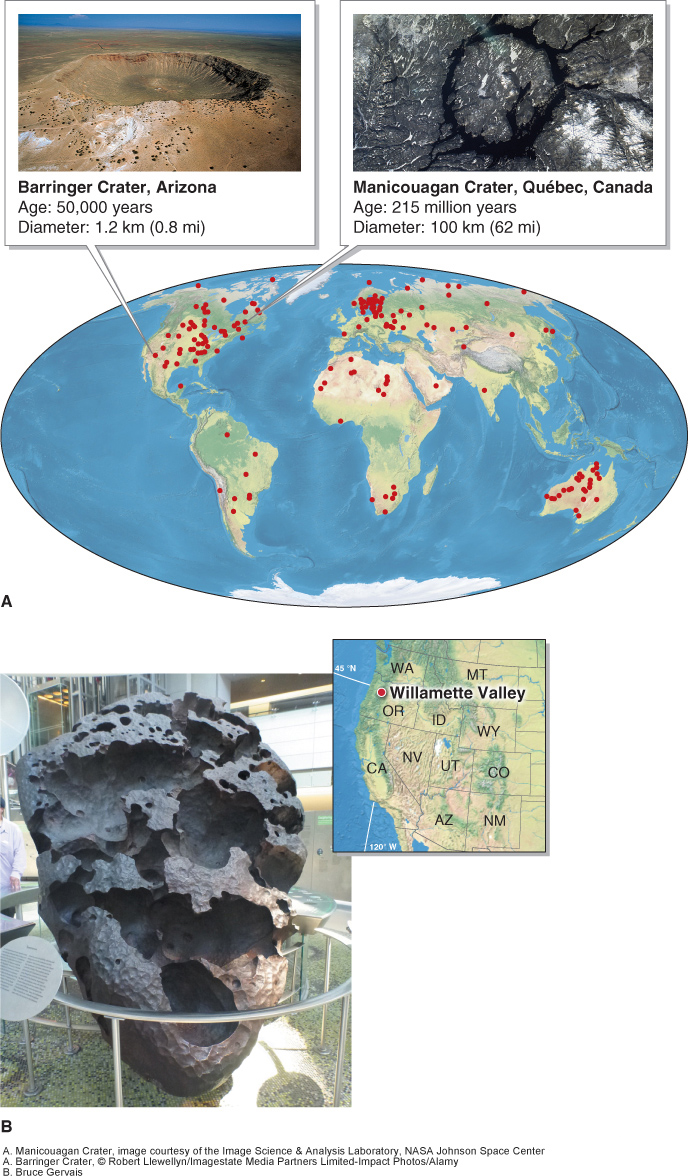
Figure 11.5
Impact craters. (A) The locations of the major surviving impact craters on Earth’s surface are shown as red dots. Barringer Crater (or Meteor Crater) in Arizona and Manicouagan Crater in Quebec are highlighted. Manicouagan Crater is one of the oldest surviving impact craters. (B) The Willamette meteorite, displayed in the American Museum of Natural History in New York, is the largest meteorite ever found in the United States. It is 3.05 m (10 ft) tall. The 15.(A. Manicouagan Crater, image courtesy of the Image Science & Analysis Laboratory, NASA Johnson Space Center; Barringer Crater, © Robert Llewellyn/Imagestate Media Partners Limited- Impact Photos/Alamy; B. Bruce Gervais)